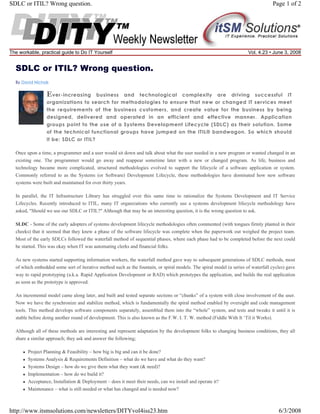The document discusses the differences between SDLC (Systems Development Lifecycle) and ITIL (IT Infrastructure Library) frameworks. It argues that asking which one to use is the wrong question, as both frameworks address different parts of managing the IT service lifecycle. The right approach is to understand how each framework's strengths and weaknesses fit within an organization's maturity and how they can be integrated together to support developing, delivering, and operating IT services efficiently. Integrating SDLC activities, governance frameworks, and other standards into the overall IT service lifecycle context enables greater organizational performance than any single component alone.

